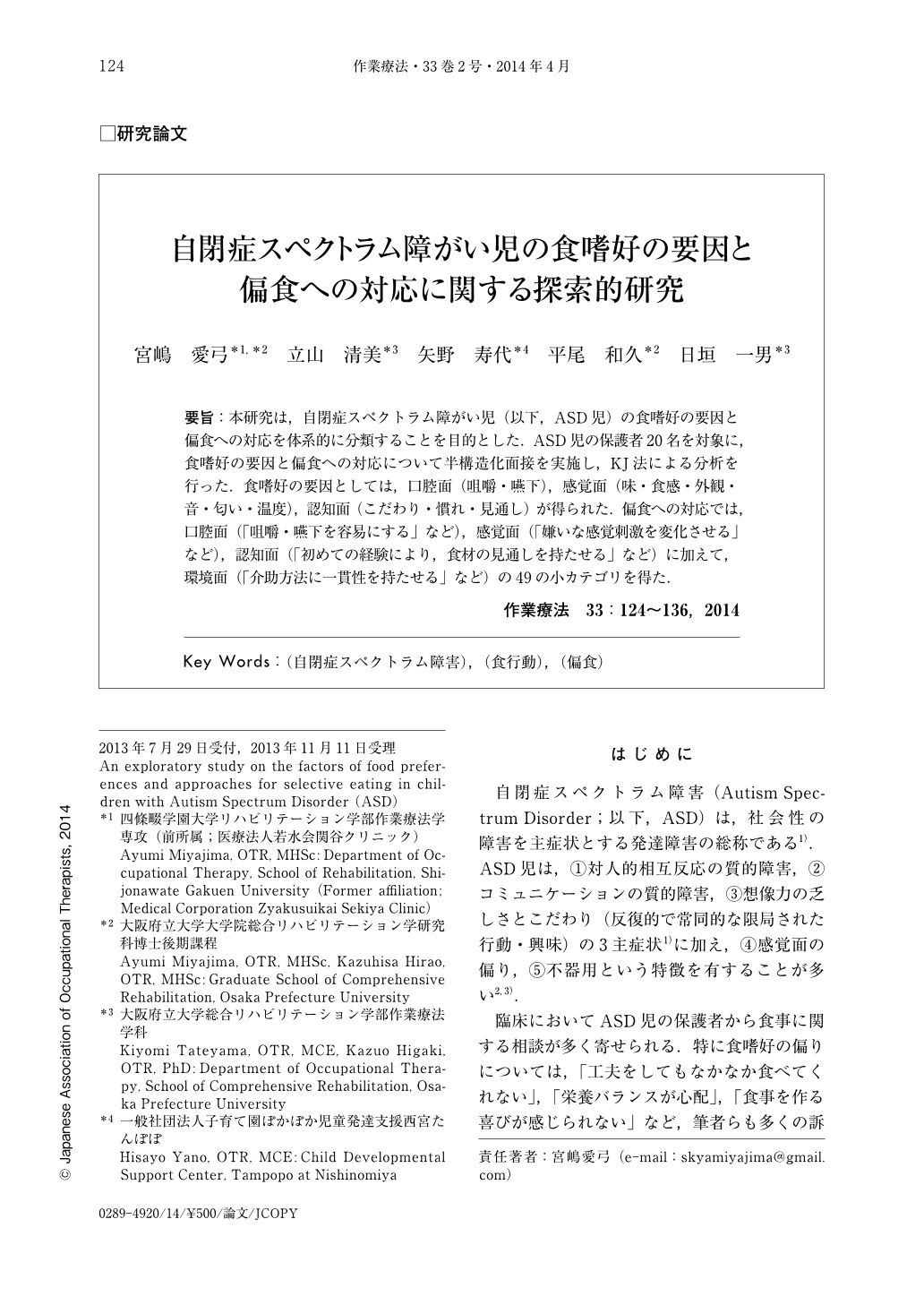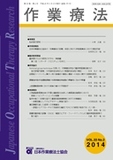Japanese
English
- 販売していません
- Abstract 文献概要
- 1ページ目 Look Inside
- 参考文献 Reference
- サイト内被引用 Cited by
要旨:本研究は,自閉症スペクトラム障がい児(以下,ASD児)の食嗜好の要因と偏食への対応を体系的に分類することを目的とした.ASD児の保護者20名を対象に,食嗜好の要因と偏食への対応について半構造化面接を実施し,KJ法による分析を行った.食嗜好の要因としては,口腔面(咀嚼・嚥下),感覚面(味・食感・外観・音・匂い・温度),認知面(こだわり・慣れ・見通し)が得られた.偏食への対応では,口腔面(「咀嚼・嚥下を容易にする」など),感覚面(「嫌いな感覚刺激を変化させる」など),認知面(「初めての経験により,食材の見通しを持たせる」など)に加えて,環境面(「介助方法に一貫性を持たせる」など)の49の小カテゴリを得た.
The aim of this study was to systematically classify the factors of food preferences and approaches to overcome selective eating behaviors in children with Autism Spectrum Disorder (ASD). Twenty parents of children with ASD responded to a semi-structured interview, and the responses were analyzed using KJ analysis. Forty-four food preferences were extracted, and these were further divided into 3 categories: oral functions which included chewing and swallowing, sensory functions which included taste, texture, appearance, sounds, smells and temperature, and cognitive function which included habituation, forecast and obsession. Regarding approaches for selective eating behaviors, we extracted 49 items and divided them into 4 categories: oral, sensory, cognitive functions and environment. We got 9 oral function approaches, such as ‘make chewing and swallowing easier', 18 sensory function approaches, such as ‘change the sensory stimulation they hate', 27 cognitive function approaches, such as ‘try new kinds of foods', and 19 environmental approaches, such as ‘support them in a consistent way'.

Copyright © 2014, Japanese Association of Occupational Therapists. All rights reserved.


